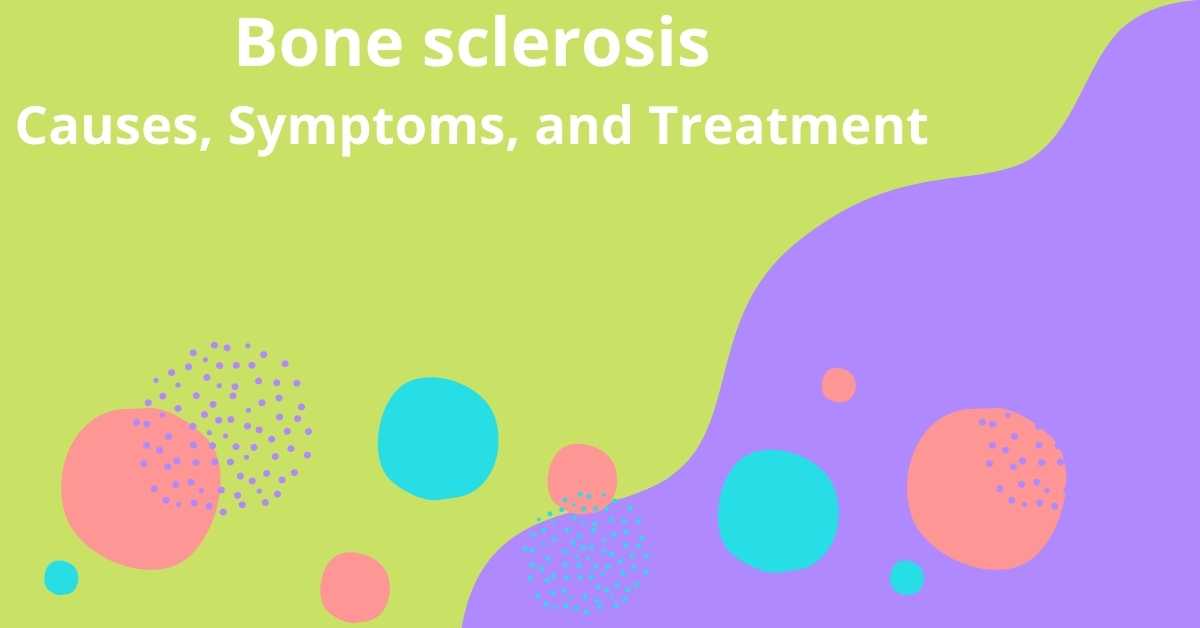Bone is a living tissue that responds to healthy or unhealthy conditions by becoming thicker or thinner. During childhood, bones are actively being built up, which slows down during the teen years. Bones are also being broken down, especially after age 20 due to wear and tear and weakening as we age. Bone tissue is composed of cells (osteoblasts, osteocytes, and osteoclasts), extracellular matrix (including bone-specific proteins such as collagen), and nerves that relate to the sense of touch. Bone sclerosis is a medical term used to describe an abnormal thickening of the bone caused by the deposit of calcium salts. The abnormal growth may result in pain, deformity, and restricted movement.
Bone sclerosis is a genetic disease that causes bones to grow very slowly, or not at all. It can cause problems with normal bone growth—especially in the spine since the spine has several different parts (vertebrae). Some people with bone sclerosis may also have arthritis.
Medical researchers do not know what causes bone sclerosis. It is thought to be an inherited disease and is more common among the people of northern and central Europe and Australia, and less so in lower latitude climes.
Bone sclerosis is one of the most common inherited bone diseases, with an incidence of 0.2 to 5 cases per 100,000 people. It frequently runs in families, but neither of its parents has to suffer from the condition. If your child also appears healthy, it is necessary only for one parent to have this genetic disposition.
Bone sclerosis, a condition that weakens bones, is a type of rheumatic disease. As its name suggests, osteoporosis reduces the mineral density in your bone tissue, which makes them more prone to fracture. It can be acquired or congenital.
Many factors may play a role in the development of bone disease, including age, bone mass, medical history, gender, etc.
Symptoms
• Bone sclerosis can range from mild to severely disabling.
• You may start with mild pain that gets worse over time.
• The affected bone may remain tender for several months depending on which bone has been affected.
• Pain caused by bone sclerosis can be persistent, lasting for weeks or even months at a time.
Causes of Bone Sclerosis
Bone sclerosis is a condition of softening of the bone. This condition has always been and still is a concern for people with hemophilia. The cause of it was unknown for many years. However, it is now known that several factors contribute to this extensive disease of the bones. High Factor VIII levels are one of these factors. Factor VIII increases bone reabsorption by stimulating osteoclast activity. Another factor is the increased risk of fractures when there is a low level of calcium in the blood.
Although it can be caused by different factors, there are three primary reasons that occur frequently. Following an injury or fracture, bone tissue that you do not need is frequently eliminated. This tissue is “reabsorbed” which means it is digested away. A lack of estrogen in some women can also cause bone sclerosis to occur in the lower spine. It can also develop in some individuals due to excessive lead exposure.
It may also be caused by myeloproliferative disorders, malignancy, or various diseases.
Bone sclerosis or osteomalacia is a disease of demineralization resulting in the decreased mineral content of the bone matrix.
Calcium is the essential mineral for the body which helps to make strong, healthy bones. But sometimes, for reasons not fully understood, the body’s cells are unable to properly absorb calcium from the intestines. Over time, this can lead to bone disease, which can cause pain and disability.
Treatment of Bone Sclerosis
It can be minimized effectively by improving the quality of life of osteoporosis patients by increasing muscle strength, stability of joints, or other functions significantly.
The LST-4000 Smart Total Limb Support System is indicated for long-term use in the treatment of intractable bone sclerosis.
A formula combining collagen and chondroitin for healthy joint health and flexibility. It is available in a convenient once-daily tablet and provides:
Collagen: A major building block of connective tissue and joint cartilage;
Chondroitin: Works in tandem with collagen to create a hydrated matrix for healthy joints;
Shark Cartilage Extract: Provides glucosamine sulfate to help maintain the integrity of the connective tissue matrix, while also relieving joint inflammation promotes connective tissue health;
Sodium fluoride and hydroxyapatite: These two compounds work together to strengthen and harden tooth enamel, making it more resistant to tooth decay and erosion caused by acids.
You might also read: Glycolipid: Types and Functions
Conclusion
Bone sclerosis is a rare illness, but with the proper treatment, it can be made manageable. To prevent bone sclerosis, you should avoid the consumption of pork and shellfish. You have to fight back against the illness with regular exercise and the consumption of cherries. Find out the best way to treat bone sclerosis in men over fifty, with many simple lifestyle changes that are easy to integrate into your everyday life.

